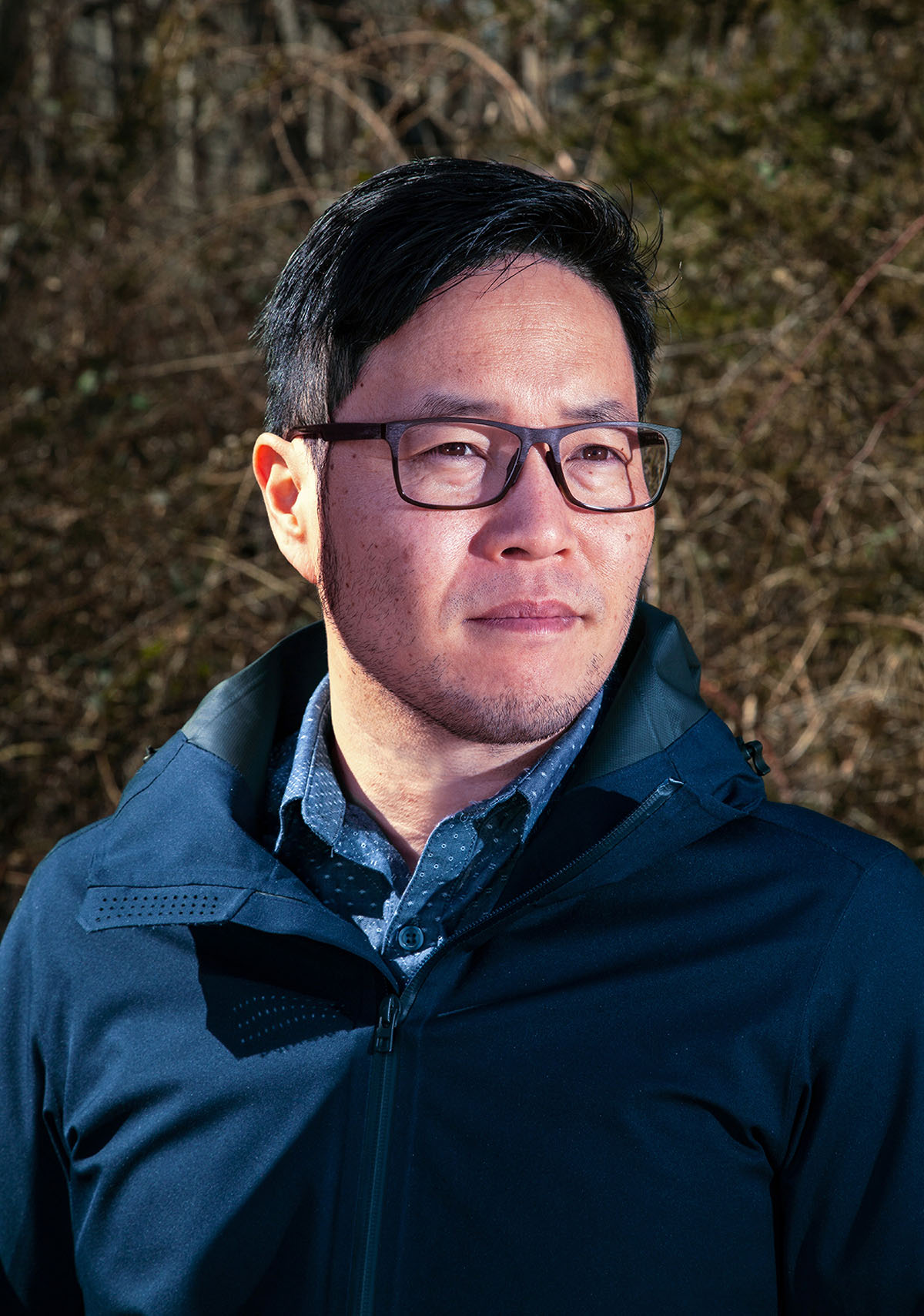Architecture for the Birds, the Bees, and the Rising Seas
INSTALLATION IN TOUISSET REFUGE PROVIDES ENVIRONMENTAL EDUCATION, ECOLOGICAL HABITAT
By Monica Allard Cox | Photographs by Dana Smith
Architect and landscape designer Leonard Yui created “ecological piers” to show environmental change, connect visitors to the landscape, and provide habitat for birds and bees.
NEAR THE ENTRANCES OF THE TOUISSET AUDUBON property in Warren, Rhode Island, visitors are greeted by the first of a series of 21-foot-tall square poles rising out of the grounds of the refuge. Dramatically tall, but charred to blend in with their surroundings, the poles feature lines of circular and oval indents, punctuated by a handful of wooden dowels.
Architect and landscape designer Leonard Yui, assistant professor of architecture at Roger Williams University (RWU), is the mastermind behind these poles, which were installed by a team including RWU students and Audubon staff. He calls the poles “ecological piers” that represent many layers of meaning. One of these is how climate change will impact habitats like those in the refuge that are close to sea level.
That connection, Yui says, was inspired in part by the “sea level rise stick,” a hand-held, 6-foot-long pole that extension specialist Teresa Crean of the Coastal Resources Center and Rhode Island Sea Grant marked with different sea level heights to help people visualize where future sea levels will be.
The ecological piers, though much taller than the sea level rise stick, mimic its shape and will include steel markers that show where sea level will be at these sites in years to come.
“That’s one element that they are meant to express: changing coastal habitat over time,” Yui says.
Besides the sea level rise projections, the piers include segments of texts from renowned 20th-century environmentalists including Rachel Carson and John Muir encoded in the indents on each pole—the dots and dashes of Morse code.
The dowels, placed where commas or periods would go, are intended as perches for visiting birds. The indents themselves are designed to be habitat for solitary bees, whose habitats are threatened.
The mile-long walking trail through the refuge encompasses pasture, forest, wetlands, and grasslands. A pier has been erected at each type of landscape and engraved with a quotation from the environmentalist most associated with that particular ecosystem, which Yui says “is meant to highlight and provide a little bit of a spiritual connection with the locations that are around here.”
If all that might be lost on the average visitor, Yui points to spaces on the poles where his students will install QR codes that, when scanned with a smart-phone, will take people to a webpage that will explain all this and, Yui hopes, will include additional information, such as interviews with climate change experts. What
Yui says makes this installation different from other work on sea level rise is how it connects impacts to a specific location.
“Sea level rise often-times is studied from kind of an aerial perspective,” looking at the vast numbers of people who will be harmed by it, he says, “And that information is definitely important … However, from an individual perspective, it’s really hard to relate to … So the strategy here that I think is really unique is to say, let’s have people understand the site first. What is the ecology of the site currently, what do you enjoy about the site, and then overlay one aspect of how sea level rise might affect this space.”
“I mean all these are really not about the structure. It’s really about helping people to look at the landscape more carefully.”
Though every inch of these “piers” has meaning, “these are really not about the structure,” says architect Leonard Yui.
Contact Us
Telephone: (401) 874-6805
Email: allard@uri.edu
Contributor Guidelines
Please review submission guidelines to be considered. d

